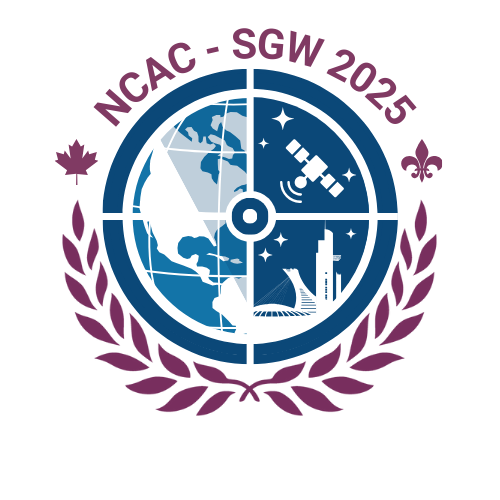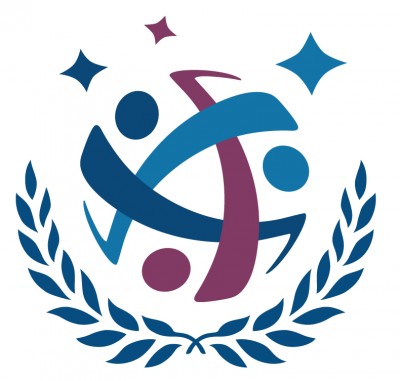SGAC Ireland
National Points of Contact Ireland
Welcome to the homepage of SGAC Ireland! Our goal is to act as a focal point for the space community in Ireland to bring space enthusiasts together and to spread awareness about space education. We also aim to help and promote the new generation of Irish space leaders. If you have an interest in space and in the Irish space community in particular please join us and spread the word about SGAC Ireland.
Ireland is unique in that we do not have any national space program, and no representation at the United Nations Office for Outer Space Affairs (UNOOSA). Thus, the SGAC is one of the few means through which the Irish space industry has a voice within UNOOSA. Ireland is also a member of the European Space Agency (ESA). In addition to acting as a focal point, it is also the current goal of SGAC Ireland to lobby the government to join UNOOSA.
Attention: The Irish ESA Space Solutions Centre is now open to aid Irish space start-ups or anyone with an innovative space related idea. Please see the links below for the details on the relevant Irish space education and space industry activities.
Keep a watch for the space events here:
- Keep an eye on the Irish Space Community facebook page or register with SGAC-Ireland to hear about informal get togethers.
- Keep an eye on Inspire Space for news on the Space Christmas Party, Yuri’s Night, Space Movie Nights and much more.
- If you have an idea for a space start up contact the Irish Space Solutions Centre here.
- Contact your local NPoC for information on the latest events and how to get involved.
Young Space Activities Overview in Ireland
Ireland has an established commercial space sector with around eighty space companies doing work in Ireland, from dealing with launchers and human spaceflight to satellite technology. Many of these companies have formed the Irish Space Industry Group and are in the process of lobbying the government to invest more in the space sector. In addition, ESA provides a great portal though which young space enthusiasts can work within the space sector. ESA commissions several of our universities and companies to carry out works. Many companies won ESA contracts in 2017 alone! In April 2017 Enbio, Innalabs and Pilot Photonics won ESA contracts. Enbio won an ESA contract worth €650,000 to develop and manufacture advanced surface coatings for Neosat, which is Europe’s next generation satellite platform for mid-size telecommunications missions. Innalabs secured a €980,000 contract to develop a space qualified rate measurement unit that will be used for satellite attitude and orbit control subsystems in a range of future space missions as well as in the commercial space market. Pilot Photonics’ contract is worth €335,000 and involves the development of laser communications sub-systems for use in a range of advanced communications satellite systems. In May 2017 it was announced that Treemetrics won a €1.2 contract for a system to track tree growth for ESA. On June 20, 2017 Arralis announced their contract with ESA for their new Leonis Ka band chipset, which will enable massive data rate communications speeds for commercial and science missions. This first phase Ka band Transceiver chipset contract is worth €650,000, which is awarded under ESA’s ARTES Competitiveness & Growth programme.
Furthermore, in 2017 ESA announced the selection of Eirsat-1 to be developed under the ESA Educational Office “Fly Your Satellite!” 2017 Programme. University College Dublin is leading the development, launch and operation of this CubeSat, in partnership with Queen’s University Belfast (QUB) and five Irish companies, Resonate Ltd, ENBIO, SensL, Parameter Space and MOOG Dublin. Eirsat-1 is due to be launched from the ISS in 2019. In addition, ESA has set up a Business Incubation Centre (BIC) for Ireland called the Irish ESA Space Solutions Centre to enable and support space start-ups.
Ireland has a place within the space outreach and academic network too. There are a number of observatories located in many parts of the country and regular observations are open free to the public. In October 2017 the government announced that funding will be provided in the budget for Ireland to join the European Southern Observatory in 2018. Furthermore, in July 2017 the Irish Low Frequency Array, or I-LOFAR (radio telescope) was switched on at its home in Birr Castle. I-LOFAR is made up of 3,000 individual antennae and 55km of wires and cables spread out across an area the size of a football field. It links into the international LOFAR network, which comprises thousands of antennae that record measurements at the lowest frequencies that can be observed from the Earth. Together it makes up the largest virtual radio telescope dish in the world, with a diameter of 2,000km. This telescope will enable further research of solar flares, stellar formation and numerous other phenomena.
There is also an Irish rocketry society in which children, students, adults or families can enjoy learning how to design, build and launch model rockets. Ireland also boasts the largest national astronomy club in the world relative to population, aptly named “Astronomy Ireland,” which aims to promote astronomy, space interest and education through talks, lectures, observing sessions and other events nationwide. There are numerous universities and institutes in Ireland where bachelors and post graduate research can be carried out in space related subjects such as astronomy, physics & astrophysics, space science and engineering. Several student space societies have been set up to aid students both in learning about space, but to also learn how to enter the space sector professionally. There are also several Irish space education blogs. Furthermore, Ireland regularly takes part in International Space Week. In addition, Ireland hosted the International Space University’s Summer Studies Programme in 2017, at the Cork Institute of Technology. The Space Studies Program gathers space professionals from all over the world for an exciting and intense summer to gain a holistic understanding of the global space industry.
Please see links relating to the Irish space sector below. If you have any useful information (e.g., links, events, clubs or societies) which would add to our current page, please do not hesitate to contact Ireland’s NPoCs.
Country-Specific Events in 2023
Coming soon!
Interesting Web Links
Helpful links on the Irish Space Industry and where to go if you want to set up a Space Start-Up or need space research funding
- ESA Space Solution Centre, Ireland
- Irish Space Industry Group
- Enterprise Ireland
- Science Foundation Ireland
- Tyndall National Institute
- National Space Centre
Helpful links on where you can study about space in Ireland
- Trinity College Dublin Astrophysics
- Dublin City University: B.Sc. in Physics with Astronomy
- Dublin Institute of Technology
- University College Dublin: Physics with Astronomy & Space Science
- University of Limerick: Aeronautical Engineering and much more
- University College Cork: Astrophysics Degree
- NUI Maynooth: Astrophysics
- NUI Galway
Information on Irish Space Activities
Space Education Resources and Activities
- European Space Education Resource Office (ESERO). Promoting space as a theme to inspire and engage young people in STEM subjects (science, technology, engineering and mathematics).
- STEPS to engineering. Engineers Irelands’ STEPS programme was established in 2000 to encourage primary and post-primary students to explore the world of science and engineering. STEPS is managed by Engineers Ireland and is supported by the Department of Education; Science, Forfás and a number of major engineering employers.
- European Space Agency Kids Corner
Places to see
- Birr Castle, Co. Offally: You can see the new I-LOFAR and the Great Telescope – in the 1840’s the Earl of Rosse designed and built the largest telescope in the world. This reflecting telescope remained the largest in the world for over 70 years.
- Newgrange, Co. Meath: Constructed over 5000 years ago (making it older than the Pyramids) Newgrange is an ancient temple and passage tomb. Newgrange is best known for the illumination of its passage and chamber by the Winter Solstice sun. Above the entrance to the passage of the mound there is a opening called a roof-box. On mornings around the winter solstice a beam of light penetrates the roof-box and travels up the 19 metre passage and into the chamber. As the sun rises higher, the beam widens so that the whole chamber is dramatically illuminated.


